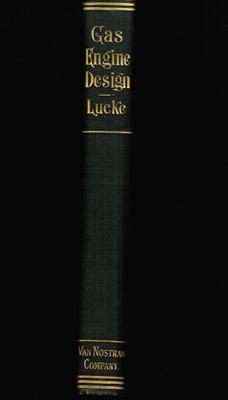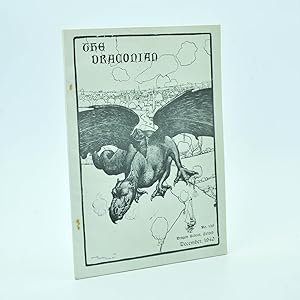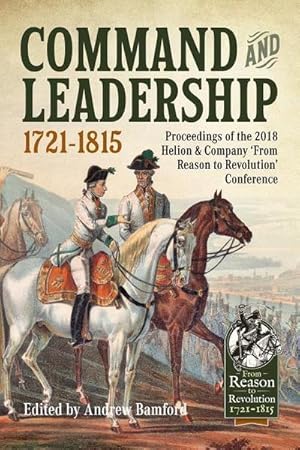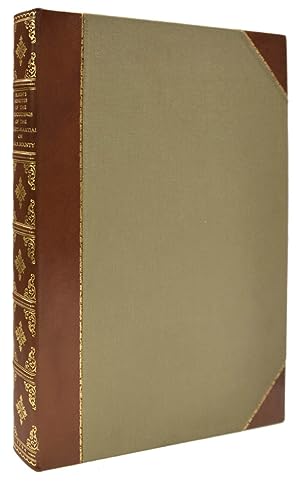Jump First by Charles Edward (6 results)
Product Type
- All Product Types
- Books (6)
- Magazines & Periodicals
- Comics
- Sheet Music
- Art, Prints & Posters
- Photographs
- Maps
-
Manuscripts &
Paper Collectibles
Condition
Binding
Collectible Attributes
- First Edition (4)
- Signed
- Dust Jacket (2)
- Seller-Supplied Images (5)
- Not Printed On Demand
Seller Location
Seller Rating
-
The Psychoanalytic Study of the Child. Volume 29, 1974.
Published by New York: Yale University Press, 1974
ISBN 10: 0300017960ISBN 13: 9780300017960
Seller: Fundus-Online GbR Borkert Schwarz Zerfaß, Berlin, Germany
Book
Originalleinen. Condition: Sehr gut. VII, 544 S. Einband leicht berieben, sonst gutes Exemplar. - In Memoriam RUTH S. EISSLER The Contributions of Berta Bornstein to Psychoanalysis: Introduction TED E. BECKER On Latency -- SYLVIA BRODY Contributions to Child Analysis -- CHARLES I. FEIGELSON Play in Child Analysis -- ROBERT J. KABCENELL On Countertransference -- PETER BLOS Berta Bornstein 1899-1971 -- THE WRITINGS OF BERTA BORNSTEIN -- PETER BLOS The Genealogy of the Ego Ideal -- MARGARET S. MAHLER Symbiosis and Individuation: The Psychological Birth of the Human Infant -- SIDNEY J. BLATT Levels of Object Representation in Anaclitic and Introjective Depression -- SAMUEL RITVO Current Status of the Concept of Infantile Neurosis: Implications for Diagnosis and Technique -- HANS W. LOEWALD Current Status of the Concept of Infantile Neurosis: Discussion -- ROBERT C. BAK Distortions of the Concept of Fetishism -- FRED BUSCH Dimensions of the First Transitional Object -- CHARLOTTE KAHN AND GERALDINE PIORKOWSKI Conditions Promoting Creativity in Group Rearing of Children -- LAWRENCE S. KUBIE Impairment of the Freedom to Change with the Acquisition of the Symbolic Process -- ANNE HAYMAN Some Unusual Anal Fantasies of a Young Child -- THOMAS LOPEZ Psychotherapeutic Assistance to a Blind Boy with Limited Intelligence -- WILLIAM THOMAS MOORE Promiscuity in a 15-Year-Old Girl -- KERRY KELLY NOVICK Issues in the Analysis of a Preschool Girl -- FRED PINE On the Concept "Borderline" in Children: A Clinical Essay -- MARGARETE RUBEN Trauma in the Light of Clinical Experience -- SANFORD SCHREIBER A Filmed Fairy Tale as a Screen Memory -- JULES GLENN The Adoption Theme in Edward Albee's Tiny Alice and The American Dream -- HERBERT J. GOLDINGS Jump-Rope Rhymes and the Rhythm of Latency Development in Girls -- OTTO ISAKOWER Self-Observations, Self-Experimentation, and Creative Vision -- MAURITS KATAN The Development of the Influencing Apparatus: A Study of Freud's Article "A Case of Paranoia Running Counter to the Psycho-Analytic Theory of the Disease" -- MARJORIE MCDONALD Little Black Sambo. ISBN 0300017960 Sprache: Englisch Gewicht in Gramm: 550.
-
Gas-Engine Design
Published by D. Van Nostrand Company, New York, 1905
Seller: Autumn Leaves, Allentown, PA, U.S.A.
First Edition
Hardcover. Condition: Very Good. Dust Jacket Condition: No Dust Jacket. First Edition. A very nice copy of a collectible title. This is the first edition. It shows no signs of use, and is free of any markings or inscriptions. The pages are lightly age-toned but in no way deteriorated, since the paper used was glossy and high-quality. The boards are not worn in the least, and the wonderful Art-Nouveau style lettering on the spine really jumps out at you. A notice from the publisher is attached to the front endpapers, It states: "The D. Van Nostrand Company intended this book to be sold to the Public at the advertised price, and supply it to the Trade on terms which will not allow for a discount." Hear, hear! Fie on discounts!.
-
Draconian Magazine - Christmas 1940 No. 159 Dragon School Oxford; Oxford Preparatory School (OPS) See website SkippersWar; Skipperswar
Published by Dragon School Oxford, Oxford UK, 1940
Seller: Jacket and Cloth, Chippenham, United Kingdom
Book First Edition
Magazine. Condition: Good. Dust Jacket Condition: Na. 1st Edition. Publishing Info: 1st Edition Description: Stapled bound magazine with illustration of dragon presumably over Oxford. School magazine for Oxford preparatory School detailing all activities and achievements of current and past pupils. Language: English. Book Condition> Good: Light wear to corners, edges and spine. Light faint rust mark to staples. 7cm tear to upper gutter edge of first page. Small rust rings around staples to front pages. Lightly tanned pages. DJ Condition> Na. Pages 9626-9684. Size: 8vo, 27cm by 19cm. Author: Hum Lynam (Skippers brother and the magazines editor 1896-1907) observed the Draconian differed from other school magazines It was started by three Old Dragons from Winchester: Robert Johnson, Robert Holland and Henry Spurling wishing to keep in touch with fellow Old Dragons to tighten the bond of union between friendships that would otherwise be severed The first edition came out in 1889, but subscriptions failed to cover the costs and the boys got into financial difficulties In 1893 Skipper agreed to take it over Old Dragon rugby, hockey and cricket matches were all written up; life achievements and publications were recorded along with births, marriages and deaths Old Dragons were also encouraged to contribute letters, articles and poems to the magazine And so, Old Dragons were used to reporting their experiences back to Skipper and Hum well before the Great War Through the war years the editor was GC Vassall, who had joined the staff in 1900 As with many OPS teachers, he acquired a nickname: Cheese - a play on his initials Up at Oxford he had been both the President of the Athletic Club and Captain of the Association Football Club He won the University Long-jump three times and was second in the Amateur Championship of 1899 In 1904 he played for the Corinthian XI which defeated the FA Cup holders, Bury, 3-1 He was good enough to be selected to play for England, but he turned this opportunity down to play in the Varsity Match with which it clashed Under his editorship, Old Dragons wrote back from all the theatres of war and indeed were pleased to receive their copies of The Draconian even when in the trenches The magazine was in its way a social networking phenomenon of the time. Book Resume: Founded in 1877 the Oxford Preparatory School (The Dragon School) is a feeder school to Eton, Shrewsbury School, Cheltenham Ladies' College, Harrow, Radley College, Rugby School, Marlborough College, Canford School, St Edward's School, Oxford and Abingdon School The School was founded by a committee of Oxford dons, among whom the most active was a Mr George In honour of St George the group decided to call themselves Dragons Teaching started in September 1877 at rooms in Balliol Hall The school expanded and moved to 17 Crick Road, which became known as "School House" Charles Cotterill Lynam (known as the "Skipper") became headmaster in 1886 In 1894, C C Lynam took out a lease on land at Bardwell Road and raised £4,000 through subscriptions for the erection of new school buildings The school was known as Oxford Preparatory School or Lynam's The present site in Bardwell Road in central North Oxford is just to the west of the River Cherwell The school was run for many years by the Lynam family Headmaster of the school The Revd A E Clarke 1877-1886 C C Lynam ("Skipper") 1886-1920 A E Lynam ("Hum") 1920-1942 J H R Lynam ("Joc") 1942-1965 R K Ingram ("Inky") 1965-1989 M W A Gover ("Guv") 1972-1989 (head of day pupils, co-headmaster with "Inky") N P V Richardson 1989-1992 H E P Woodcock 1992-1993 Roger S Trafford 1993-2002 John R Baugh 2002-2017 Crispin Hyde-Dunn 2017-present. PLEASE ASK for additional photographs if required.
-
Command and Leadership 1721-1815: Proceedings of the 2018 Helion & Company 'From Reason to Revolution' Conference
Published by Helion & Company Jun 2019, 2019
ISBN 10: 1911628534ISBN 13: 9781911628538
Seller: AHA-BUCH GmbH, Einbeck, Germany
Book
Buch. Condition: Neu. Neuware - The inaugural ¿From Reason to Revolution Conference¿ took as its theme ¿Command and Leadership¿, which was explored in a variety of different ways by eight speakers whose papers took in the armies of France, Austria, Portugal, and Britain (and touched in passing on those of Prussia and the Netherlands too), and whose geographical remit encompassed North America, Europe, and Africa. This volume presents the proceedings of that conference.The first three chapters consider lower-level leadership, with a focus on ideas of expertise and professionalism. Will Raffle explores the tensions between local experts in New France and professional officers from the mother country, taking as its case study the campaign for Oswego in 1756. Tobias Roeder looks at the Habsburg officer corps during the eighteenth century and the tensions between the dictates imposed by the profession of arms on the one hand and the social expectations of a gentleman on the other. Lastly, Mark Thompson reviews a little-known body of men from the Peninsular War in the shape of the Portuguese Army¿s corps of engineers.The next pair of chapters address the opposing commanders in the Jacobite Rising of 1745, drawing some interesting parallels between two young royals who were both obliged to rely on their own charisma and force of character to address difficult and complex military situations. For Charles Edward Stuart, Jacobite Prince of Wales, the challenge was to create an army from scratch out of a collection of self-willed and self-opinionated individuals. Arran Johnston looks at how he did this, but also at the tensions that were inherent in the Jacobite command structure. Conversely, Prince William, Duke of Cumberland, inherited command of an army of regular troops but one which had its morale at rock bottom after defeat at Falkirk, and Jonathan Oates addresses how Cumberland was able to restore order and self-respect to his command, and take it on to victory at Culloden.The final three chapters jump forwards by a half-century, to look at the events of the French Revolutionary Wars. Carole Divall looks at the Flanders campaigns of 1793-1795, considering the problems faced by generals on both sides and concluding that all would have been far better off without the interference of their respective political masters. Jacqueline Reiter, by contrast, considers someone who was both general and politician in the shape of John Pitt, 2nd Earl of Chatham, and her study of his role in the 1799 Helder Campaign both restores a reputation as a brigadier unfairly sullied by Sir John Fortescue but also considers the tensions caused by his dual role as subordinate general on the one hand and senior cabinet minister on the other. Finally, Yves Martin looks at the three very different personalities who successively commanded the French Army of the Orient in Egypt, providing very illuminating pen-portraits of three larger-than-life characters each with pronounced strengths and weaknesses.
-
The Parade's Gone By .
Published by Alfred A. Knopf [A Borozi Book], New York, 1968
Seller: Ground Zero Books, Ltd., Silver Spring, MD, U.S.A.
First Edition
Hardcover. Condition: Very good. Dust Jacket Condition: Fair. Format is approximately. 7.25 inches by 10.25 inches. [12], 577, [3], xiii. [3] pages. Illustrated endpapers. Illustrations. Index. Decorative DJ. DJ is price clipped, worn, torn soiled and chipped. Gift inscription, NOT from author, on fep. This is a large and heavy book and if sent outside of the United States would require additional shipping charges. A vivid, nostalgia, immediate portrait of an art in the making. Kevin Brownlow (born Robert Kevin Brownlow; 2 June 1938) is a British film historian, television documentary-maker, filmmaker, author, and film editor. He is best known for his work documenting the history of the silent era, having become interested in silent film at the age of eleven. This interest grew into a career spent documenting and restoring film. Brownlow has rescued many silent films and their history. His initiative in interviewing many largely forgotten, elderly film pioneers in the 1960s and 1970s preserved a legacy of early mass-entertainment cinema. He received an Academy Honorary Award at the 2nd Annual Governors Awards given by the Academy of Motion Picture Arts and Sciences on 13 November 2010. This was the first occasion on which an Academy Honorary Award was given to a film preservationist. Among the items coverer are Vitagraph, Hollywood, D. W. Griffith, Allan Dwan, Henry King, Mary Pickford, Edward Sloman, William Wellman, Cecil B. De Mille, von Sternberg, Charles Rosher, Douglas Fairbanks, Stunt Men, Louis B. Mayer, Irving Thalberg, David O. Selznick, Reginald Denny, Harold Lloyd, Buster Keaton, Charles Chaplin, Abel Gance, Betty Blythe, and Gloria Swanson. Brownlow's first book on silent film, The Parade's Gone By., was published in 1968. The book features many interviews with the leading actors and directors of the silent era, and began his career as a film historian. He spent many years gaining support for the restoration of Abel Gance's French epic, Napoléon (1927), a then-mutilated film that used many novel cinematic techniques. Brownlow's championing of the film succeeded, and the restored version, with a new score by Carl Davis, was shown in London in 1980, and again in London in 2013 with the Philharmonia Orchestra. Gance lived to see the acclaim for his restored film. The San Francisco Silent Film Festival presented the complete 2000 restoration of the film, with Davis conducting his score, at the Paramount Theatre Oakland in March 2012. Derived from a Kirkus review: Passing in review here is the silent film era and Mr. Brownlow has done a splendid job of vitalizing the past through interviews and personal research. Most of this material has never seen print before and the filmophile will go wild over reminiscences such as Joseph Henabery's (who assisted Griffith on Intolerance). And the snaps: Garbo who loved watching talking pictures in reverse but refused to view them the right way. . . Fairbanks intimidated by the Robin Hood castle -- "You expect me to jump across that?" . . .Buster Keaton who broke his neck doing his own stunts and didn't realize it until ten years later. . . the chaos that was the original Ben Hur -- "we'll paint muscles on you!" . . . Irving Thalberg arguing with Von Stroheim over a foot fetishist scene --"You are a footage fetishist" . . . Producers, directors, writers, actors, stuntmen, the last of the pioneers, each with his own marvelous recollections. A fine splice of a fantastic life and with the 261 photographs. First Edition [stated], presumed first printing.
-
Minutes of the Proceedings of the Court-Martial held at Portsmouth, August 12, 1792 on Ten Persons charged with Mutiny on Board His Majesty's Ship the Bounty. With an Appendix containing a full Account of the real Causes and Circumstances of that unhappy Transaction, the most material of which have hitherto been withheld from the Public.
Published by London J. Deighton, 1794
Book First Edition
First edition. 4to (32 x 25.5 cms), [iv], 79pp. One line erratum at foot of last page, a superb copy, stitched as issued, completely uncut, with very large margins; title lightly dust-soiled, a few minor marginal nicks, preserved in modern calf-backed book-form box. The sensational trial of the Bounty mutineers. A legendary Pacific rarity. In 1789, a gang of disgruntled sailors commandeered the ninety-foot Bounty, rebelling against their captain, William Bligh, following a research voyage to Tahiti to collect plants. Led by ship's mate Christian Fletcher, the mutineers cast Bligh and nineteen of his loyal sailors adrift in a rowing boat before escaping to Pitcairn Island where they planned to settle. They set fire to the Bounty to cover their tracks, but their crimes caught up with them two years later when, after news of the mutiny reached Britain, a ship was dispatched to arrest the mutineers. After rounding up fourteen out of twenty-three of them, they were imprisoned in a makeshift cell on the deck of HMS Pandora. Four died along with thirty-one crewmen when the ship ran aground on the Great Barrier Reef, but the remaining ten prisoners were returned to Britain to face court martial in Portsmouth. This sensational trial led to three pamphlets: the first by Barney, with an appendix by Fletcher Christian's brother, Edward, in which Christian seeks to justify the mutiny; the second by Bligh in which he defends himself; and the third by Christian, replying to Bligh's defence. Bligh had already returned to England in 1790, not as the man who had lost his ship to mutineers, but as the courageous hero who had sailed his men to safety in an open boat over 3,600 miles with scant provisions and navigational equipment. This must rank as the greatest row-to in maritime history, perhaps only approached by Worsley's epic voyage in the south Atlantic on Shackleton's Trans-Antarctic Expedition. The sensational news of his ordeal elevated him to celebrity status. The Minutes of. the Court-Martial is, according to Parsons 'a legendary Pacific rarity'. Hill notes that 'only a few copies were printed for distribution among the interested parties and the ministers of state at that time'. The work gives an account of the trial of the members of the Bounty crew who were captured and repatriated; the minutes were taken by Stephen Barney, who was representing William Musprat. The Appendix is by Edward Christian is a vindication of his brother Fletcher's conduct in the affair. Christian had represented his brother as a tormented romantic figure, which did much to fix for posterity the perception of Bligh as a brutal authoritarian. Christian notes that the crew declared that 'Captain Bligh used to call his officers "scoundrels, damned rascals, hounds, hell-hounds, beasts, and infamous wretches". that he frequently threatened them, that when the ship arrived at Endeavour Straits "he would kill one half of the people, make the officers jump overboard, and would make them eat grass like cows;" and that Christian, and Stewart, another midshipman, were as much afraid of the Endeavour Straits, as any child is of a rod' (p63). The court-martial of the ten mutineers was held aboard the HMS Duke, with Lord Hood presiding over a panel of twelve captains. Of the ten men tried, Joseph Coleman (armourer), Thomas McIntosh and Charles Norman (carpenter's mates), and Michael Byrn (able seaman) were acquitted. Bligh had singled out the first three as loyalists but as there was no more room in the launch on which he was set adrift, they were obliged to stay aboard the Bounty. Peter Heywood (midshipman), James Morrison (boatswain's mate), William Muspratt (cook's assistant), and able seamen Thomas Ellison, John Millward and Thomas Burkett were found guilty and condemned to death. Heywood and Morrison were later given royal pardons; and Muspratt was acquitted owing to the fact that certain evidence had not been entered at the time of the court-martial. Only Burkett, Ellison, and Millward were hanged. Hill (2004), 1162; Ferguson 175; Parsons Collection, 158.







